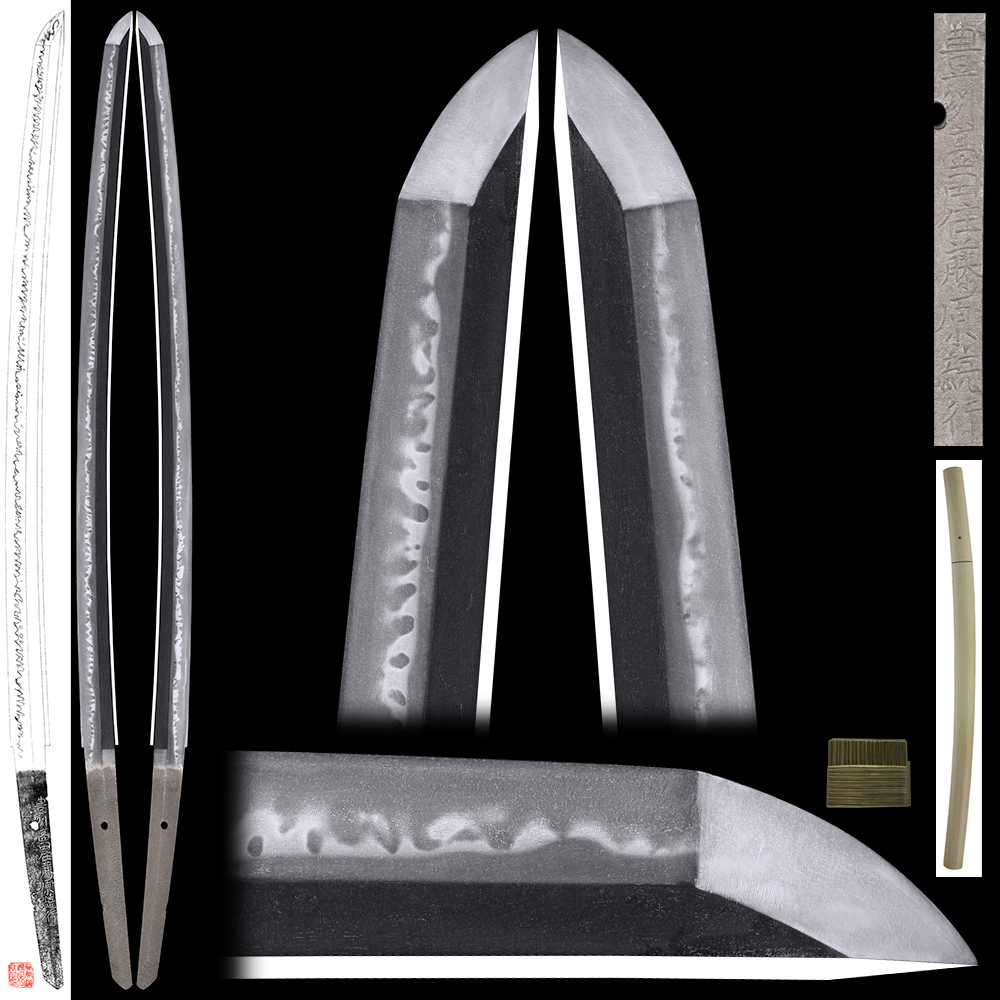Katana : Hoshu Takada Ju Fujiwara Muneyuki (Not guarantee)
2017/01/04
Katana in Shirasaya with Koshirae
Signature : Hoshu Takada Ju Fujiwara Muneyuki (Not guarantee)
(We divide 4 sections for each sword as Saijyo saku, Jyojyo saku
Jyo saku and regular saku)
This Hoshu Takada Ju Fujiwara Muneyuki(Not guarantee) belongs to Jyo saku ranking.
Habaki: gold foiled double Habaki.
The blade was polished.
Blade length : 62.2 cm or 24.48 inches.
Sori : 1.2 cm or 0.47 inches.
Mekugi : 1
Width at the hamachi : 3.03 cm or 1.19 inches.
Width at the Kissaki : 2.11 cm or 0.83 inches.
Kasane : 0.66 cm or 0.25 inches.
Era : Early Edo period.
Shape : Wide and thick Katana with large Sori.
Jitetsu : Ko-Itame Hada well grained with Jinie attach. It is clear Jigane.
Hamon : Nie Deki, Gunome Midare and Fukuro Choji Midare.
Boshi is Midarekomi style. In Ha, there are Sunagashi.
Special feature : Houshu Takada Ju Fujiwara Muneyuki was called Nakamaro Shingoro.
There are pieces remaining from Koto period and is called Toyogo
Takada or the original of Shinto Takada school.
This school could be tracked back to Nanbokucho period.
The style of the piece is mixture of Seki and Bizen.
At times, it is easily mistaken with Bizen katana.
Tsuneyuki has especially nice jigane and the hamon is similar to HIzen katana.
Compared to Hizen katanas the Bungo katana are more meager
because it is more coarsely and roughly made than Hizen katana.
It is discussed that Hizen, the neighbor country of Bungo, was protected
by the Daimyo enabling them to use the Western iron.
This sword is gunome midare with Mino style taste.
There is gunome midare mixed and the base is good.
Koshirae :
Tsuba : Shakudo chrysanthemun shape Tsuba.
Fuchikashira and Kojiri : Shakudo Nanako, family crest is engraved with Shakudo color.
Saya : brown color with some design.
Menuki : Shakudo Nanako, family crest is engraved with gold color.
Aoi Art estimation paper : whole Oshigata.




